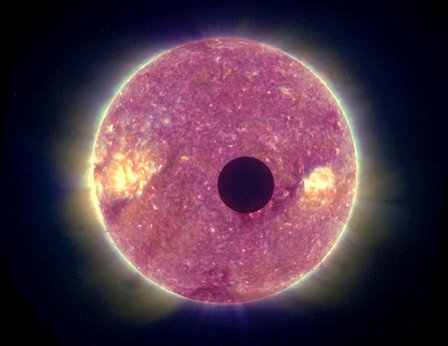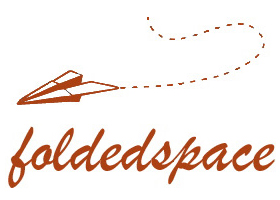I’m an astronomy geek. I’ve always been an astronomy geek. But never have I seen anything as amazing as NASA’s beautiful video of the moon transiting the sun. (A transit is, essentially, the same as eclipse, except that the forward body does not fully occlude the rear body.)
Here’s an image of the transit:

But an image cannot do this justice. Do yourself a favor and watch this on video. NASA has three video sizes: small, medium, and large. Watch the large version.
If this doesn’t blow your mind, you fail to comprehend the cosmic scale involved here. This is light-years (ha!) better than any movie special effect. This is real life! That is our sun. That is what allows all life on Earth. It’s awesome.
Here’s some info from the NASA web site:
“The images have an alien quality,” notes [NASA scientist Lika] Guhathakurta. “It’s not just the strange colors of the sun. Look at the size of the Moon; it’s very odd.” When we observe a lunar transit from Earth, the Moon appears to be the same size as the sun — a coincidence that produces intoxicatingly beautiful solar eclipses. The silhouette STEREO-B saw, on the other hand, was only a fraction of the sun’s diameter. “It’s like being in the wrong solar system.”
The Moon seems small because of STEREO-B’s location. The spacecraft circles the sun in an Earth-like orbit, but it lags behind Earth by one million miles. This means STEREO-B is 4.4 times further from the Moon than we are, and so the Moon looks 4.4 times smaller.
STEREO-B has a sister ship named STEREO-A. Both are on a mission to study the sun. While STEREO-B lags behind Earth, STEREO-A orbits one million miles ahead (“B” for behind, “A” for ahead). The gap is deliberate: it allows the two spacecraft to capture offset views of the sun. Researchers can then combine the images to produce 3D stereo movies of solar storms.
Of particular interest are coronal mass ejections (CMEs), billion ton clouds of electrified gas hurled into space by explosions on the sun. “STEREO’s ability to see these clouds in 3-dimensions will revolutionize our understanding of CMEs and improve our ability to predict when they will hit Earth,” she says.
The STEREO mission is still in its early stages. The two spacecraft were launched in Oct. 2006 and reached their stations on either side of Earth in January 2007. Now it’s time for check-out and calibration. The first 3D views of solar storms are expected in April.
I can watch this video again and again. If anything is going to make believe in a god, it’s going to be something like this. Amazing. Don’t you folks be lobbying to cut my space program!
[NASA: Stereo eclipse, via kottke]
